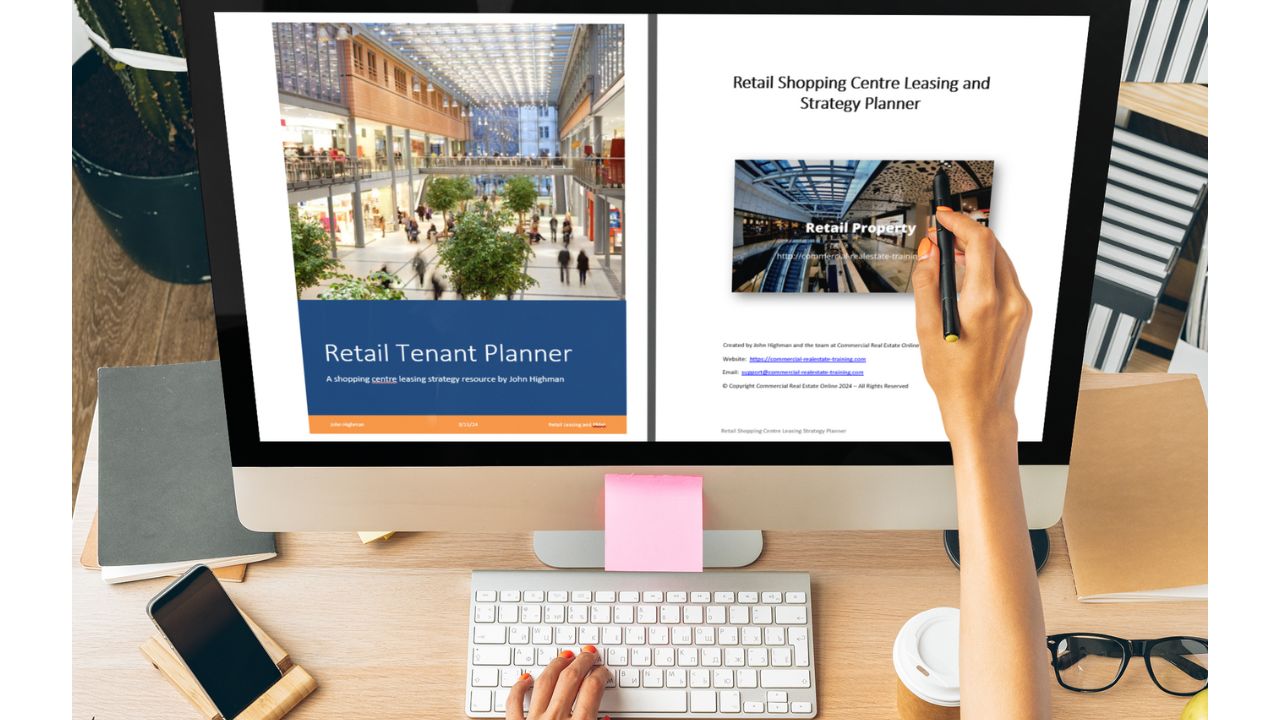Commercial Real Estate Leasing Agents – Tips to Watch Out for with Inflated Rents Above Market Rent
With some leases today, you will find that the actual rent paid by the tenant is well above market, and that could be because of fixed rent increases occurring from the lease and during the initial lease term without a true ‘market’ review or alignment.
A high rent situation is always good for the landlord, while the lease is mid-term, and the tenant is paying rent. Things can change, however, at lease renewal time when the tenant has some occupancy choices, and on that basis, they will be looking at the overall occupancy alternatives.
So let’s look at this problem a bit more. If there is a ‘ratchet clause’ in the lease that prevents the rent falling when a market review is undertaken at option then the rent will go up; an astute tenant will review market conditions and occupancy alternatives before agreeing with the new lease option.

Download retail property checklist here
Checklist for real estate agents in sales, leasing, or property management.
Get the fully detailed retail property and shopping centre checklist in PDF form for your ongoing reference and use in sales, leasing, or property management activity with investment properties.
Rental Ratchet Effect
Whilst the ‘ratchet’ effect is designed to protect the landlord’s cash flow and will typically prevent the rent from falling, the tenant is likely to be ‘commercially aware’ of what market rent is in today’s money and, on that basis, look for other premises to move into before deciding to exercise the option.
Do you want to lose a tenant? Unless the landlord has some specific property plans where tenants have to be moved (such as a renovation), a pending or potential vacancy is not desirable.
This is a complex problem and a number of other matters can impact the considerations of the landlord. A skilled commercial real estate agent can help with balancing all the problems arising. Think about these:
- How long is the option term? – The landlord may look at the exercising of the option differently, depending on the duration of the extra term and the future of the property.
- What is the vacancy factor in the building? – In a larger building with a number of tenants in occupancy, the prevailing vacancy factor in the property is likely to impact the landlords thinking about a new lease or rental negotiation.
- What is the vacancy factor in the property location or part of the city? – The number of vacant premises locally will vary during the year and influence the enquiry rate for any new tenant taking up space.
- What is the real market rent doing? – Understand what the actual market rents are doing so that a fair and reasonable rent negotiation can occur with the sitting tenant, thereby encouraging a new lease start.
- How attractive or commercially strong is the existing lease? – Some leases are not overly beneficial to the landlord. That could be through the impact of outgoings recovery or terms of occupancy. Negotiating a new lease with a new tenant can then be more attractive to a landlord. It’s something to look into and understand when any existing lease is up for option negotiation.
The message here is that an option for an extended-term under a lease will have factors to review at renewal time. Keep the landlord fully briefed on market conditions and market rents before the tenant starts the option discussions; negotiate the option and the market rent wisely as a consequence.







